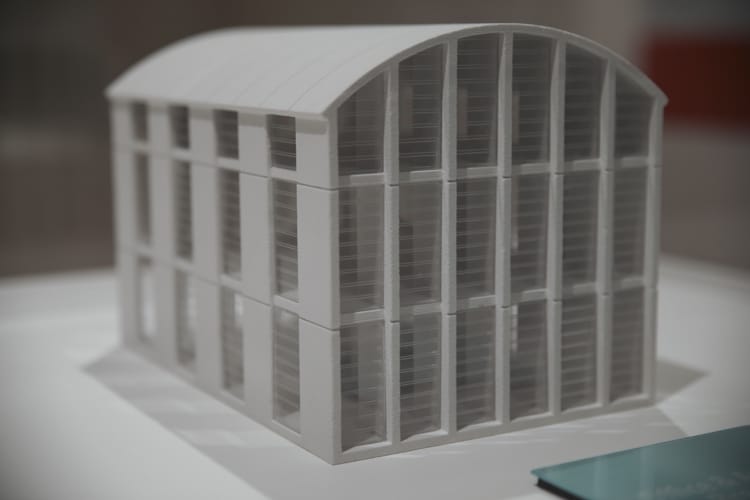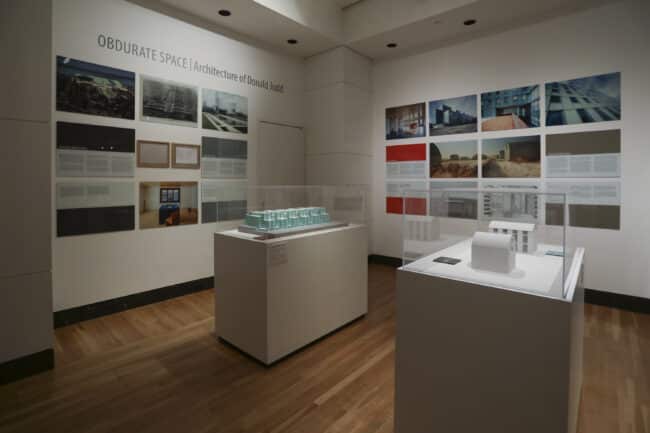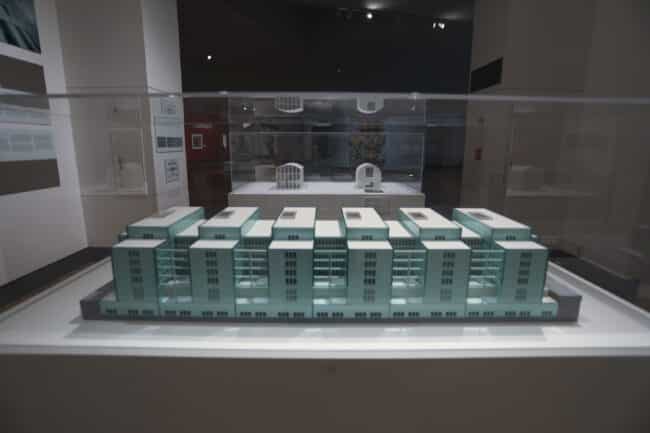This exhibition coinciding with a Donald Judd retrospective at MOMA, details five projects, within a threefold thematic framework, to reveal a significant body of architecture (1984 – 1994). The three themes addressed are drawing abstraction, concrete expression and Swiss situation. The exhibition contributes to architectural discourse by addressing overarching aspects of Judd’s practice, including his connection to architectural movements and influences of Europe, 1964 – 1994, specifically, Italian “La Tendenza” and Swiss “New Simplicity”, and at the same time, his independence in thought and action as an American artist making architecture.
Judd was aware of and concurred with some concepts expressed through drawings of the “La Tendenza” movement in Italy, as it promoted architecture and planning of rationalism, but he was sensitive to local cultural conditions. The typical projects of the movement, often expressed through drawings, were not flamboyant, but relatively plain, not individualistic, but for the community, not complicated, but archetypal. Through Judd, the influence is found from Marfa to Cleveland, in proposed and built works. Later, with a new base in Switzerland, Judd’s focus on clear space and material resonates with the art world establishment, and he is promoted as architect to art museums and public buildings.
The second aspect addressed is the relative freedom Judd exercised in making design decisions. Judd did not confuse art and architecture, but understood the experience of form, space and structure as a continuum across the disciplines, not to be compromised by trivial contingencies or differences in scale. This freedom prompted experimentation, in particular with a favorite material, concrete.



